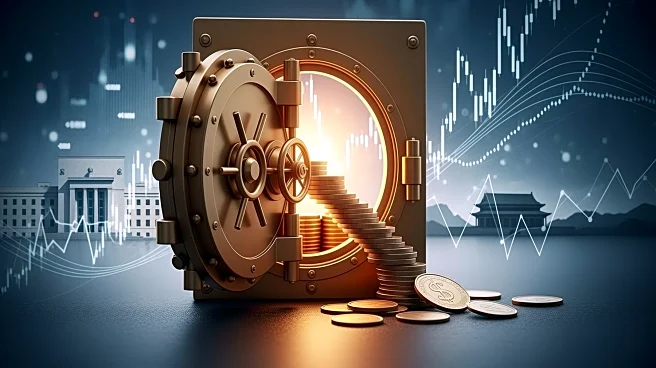What's Happening?
Gold prices have reached a record high, driven by escalating U.S.-China trade tensions and expectations of interest rate cuts by the Federal Reserve. Spot gold was up 0.8% at $4,242.65 per ounce, marking
a significant increase of over 60% year-to-date. The ongoing U.S. government shutdown and geopolitical uncertainties have fueled demand for gold as a safe-haven asset. Analysts suggest that if no resolution is reached between the U.S. and China, gold prices could potentially exceed $5,000 per ounce.
Why It's Important?
The surge in gold prices reflects investor concerns over geopolitical tensions and economic instability. As a non-yielding asset, gold typically performs well in low-interest-rate environments, making it attractive amid expectations of rate cuts. The rise in gold prices impacts various stakeholders, including investors seeking safe-haven assets and industries reliant on gold for production. The ongoing U.S. government shutdown further exacerbates economic uncertainty, potentially affecting market stability and investor confidence.
What's Next?
The trajectory of gold prices will depend on developments in U.S.-China relations and Federal Reserve monetary policy. Traders are anticipating rate cuts in October and December, which could further influence gold's appeal. If geopolitical tensions persist, gold may continue its upward trend, impacting global supply chains and economic forecasts. Stakeholders, including policymakers and investors, will closely monitor these developments to assess potential risks and opportunities.
Beyond the Headlines
The rise in gold prices highlights broader economic challenges, including de-dollarization and central bank buying. These factors reflect shifts in global economic power and the search for alternative assets amid currency volatility. The situation underscores the importance of strategic economic planning and international cooperation to address underlying issues affecting market stability.











